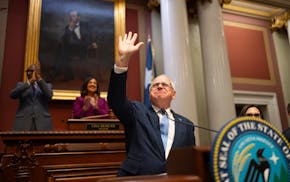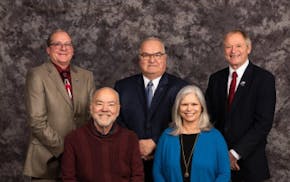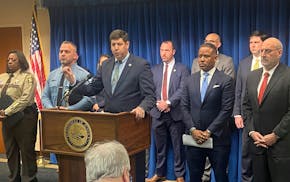A bill proposed in the Minnesota Senate would make colleges' and universities' financial aid letters simpler, and require them to use a standardized form and common terms when communicating with families about college costs.
Advocates for the bill said at a hearing Thursday that college students are increasingly burdened by student loan debt, and not everyone understands how much they're actually going to pay after receiving financial aid letters from colleges, which use different formats and language, making them hard to compare.
"Understanding financial aid is one of the biggest challenges for families and students accessing higher education," said Sen. Clare Oumou Verbeten, DFL-St. Paul, the bill's sponsor. "I think this is a really important consumer protection measure."
The impetus for the bill came from a report from the federal Government Accountability Office in 2022 that found nearly two-thirds of colleges in a nationally representative sample follow half or fewer of the "best practices" for creating financial aid letters, Oumou Verbeten said. The report also recommended mandating that financial aid letters follow those practices, which the report includes.
The requirement that colleges use a standardized form for their letters would start in the 2028-2029 school year. The bill would also require that, in developing a standard financial aid letter, state leaders must consult with students, representatives from institutions, school counselors and the student loan advocate in the Department of Commerce.
Letters would have to include the estimated cost of attendance, a student's total direct costs and other expenses, the financial period for the offer, whether costs are based on full-time or part-time status and whether tuition is calculated by credit hour and the aggregate amount of grants and scholarships, itemized by source.
They must disclose that loans have to be repaid, that interest rates are set annually and directly call out loans using that word. The letters must explain the process for accepting the aid offer and what a student's next steps are.
There's also a federal bill — called the Understanding the True Cost of College Act — aiming to do the same thing, Oumou Verbeten said, adding that Minnesota wants to be a leader in this area.
Other similar bills at the state level have been proposed previously, she added, with the first version introduced in 2017.
Why the bill is needed
Nine people testified Thursday, sharing why they believe the bill is important.
Rachel Fishman, director of the higher education program at New America, a liberal think tank, said college is the second-most expensive purchase many people will make, but they're "left in the dark" when it comes to how much things really cost.
Fishman explained that with some financial aid letters, loans aren't always called loans. Comparing letters side-by-side is impossible, she said.
Several students shared their experience with the financial aid process, including how hard it was to know what they would actually owe each college.
Max Berg, a first-generation student from Carver County, said he was confused by the University of Minnesota's Twin Cities campus' financial aid offer. He now attends the university but didn't realize his financial aid included a work study position. He never applied for nor received a campus job, resulting in an unexpected outstanding bill he had to pay.
He was misled by an offer written in jargon he couldn't understand, he said.
"All we're asking for is honesty," he testified. "Tell us what it's really going to cost."
Maddie Sparks, who now works for Ed Allies, a nonprofit that advocates for higher education access, said she used to work with students at Burnsville High School, helping them apply and prepare for college. Financial aid letters can "make or break" a student's future, she said.
"We spent so much time just decoding what was in each [financial aid] letter," she said.
As a St. Catherine University student majoring in political science, Eleanor Anderson said she applied to 11 schools and decided "to let financial aid make my decision" of where to attend. But when she got financial aid letters, she didn't know how to compare them because they all included different costs. Some even factored in the cost of public transportation, she said.
She still has no idea what it would have cost to go to the U, she testified.
"It was incredibly disempowering," she said, calling the process "the most stressful experience of my life."
Mike Dean, executive director for the nonprofit North Star Prosperity, said students sometimes make poor decisions about college because they don't have the right information. His organization created a mock-up of what the standardized letter could look like.
To a lawmaker's question about how the bill would be implemented and if there was enough time, Wendy Robinson, the Office of Higher Education's assistant commissioner of programs, policies and grants, said more time would be helpful, but the office is "officially neutral" on the proposal.
"This is one of the most expensive purchases and people do it at such a young age," Oumou Verbeten said. "Transparency is so important."

As Rep. Angie Craig takes her town halls to greater Minnesota, Republican colleagues say she may be violating House ethics rules

Gov. Walz excoriates Trump, offers olive branch to MN Republicans in State of the State speech

Minnesota county commissioner, whose wife wanted him to step down due to cognitive concerns, resigns

Federal jury convicts three Minneapolis 'Highs' gang members of murder, racketeering

